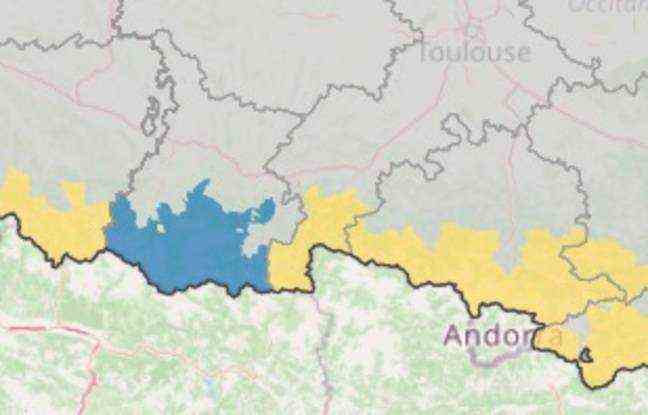Whether you are driving on the roads of Pontarlier, in the Doubs, in Chambéry, in Savoie or in Ax-les-Thermes, in Ariège, this winter, you will have to remember to check your tires. As of this November 1, the winter equipment for cars, but also buses and heavy goods vehicles, will be
now mandatory in certain towns in the mountain ranges, whether in the Alps, the Massif Central, the Vosges, the Jura mountains, the Pyrenees or even Corsica. And will be throughout the winter, until March 31, each year. 20 minutes takes stock of this new obligation.
What are the territories where it becomes mandatory?
In total, 48 departments are affected by this new regulation born out of the Mountain Law. It should make it possible to reduce the risks on snow-covered and icy roads. And avoid, for example, ending up with a car across a narrow road that blocks access to ski resorts and creates a huge traffic jam, polluting the good high altitude air.
In some departments, this measure applies without distinction to all the roads in its territory, such as in Savoie. In others, it concerns only certain municipalities or particular routes. In the Hautes-Pyrénées for example, 55 towns or villages are concerned, on all of their roads or partially.
🚗 Obligation in 55 municipalities of the Hautes-Pyrénées department to wear winter equipment from November 1:
🔹 snow tires (on all 4 wheels)
🔹 socks or chains (on board the vehicle)Find the list of the municipalities concerned on: https://t.co/YGudszyauh pic.twitter.com/hG051vjdEp
– Prefect of Hautes-Pyrénées (@ Prefet65) September 30, 2021
All the decrees freezing the map of the municipalities concerned have not yet been taken, but will be by the end of the month. After negotiations, as in Ariège where the list was reduced from 78 to 46 municipalities following a somewhat heated discussion with the president of the departmental council who had mentioned a decree “thought by the Parisians”.

So that motorists are not caught out, signs will be installed to indicate the entrance to the “winter equipment obligation zone”.
Snow tires, but not only …
This measure has not necessarily received a favorable response everywhere. The argument of road safety being supplanted by the financial question. Because for the inhabitants of the villages where this measure is compulsory, this means that they will have to equip themselves if they have not already done so.
For convenience, if they are used to having snow-covered roads regularly, they will take the option of winter tires, commonly called “snow tires”. Be careful, however: if the tires have a logo representing a snowflake in a mountain, with an S and M mention, they are “3PMSF” equipment for “3 Peak Mountain Snow Flake,” valid beyond the 1st November 2024. Those which carry only the mention “M + S” will be tolerated until this date, but not afterwards.
The use of snow tires is not an obligation. Motorists can also be content with having removable anti-skid devices in their trunk, be it chains or snow socks. With the constraint that this equipment is there permanently … which can take up space when the trunk is small.
Tolerance the first year
Faced with the outcry against this new regulatory measure in mountain areas, the government is playing the information-prevention card for this first winter.
“Any breaches of this obligation will not be penalized in the first year of the implementation of this device, ie from November 1, 2021 to March 31, 2022”, thus indicates Road Safety on its site dedicated to this measure. A year of respite to get into the nails …

